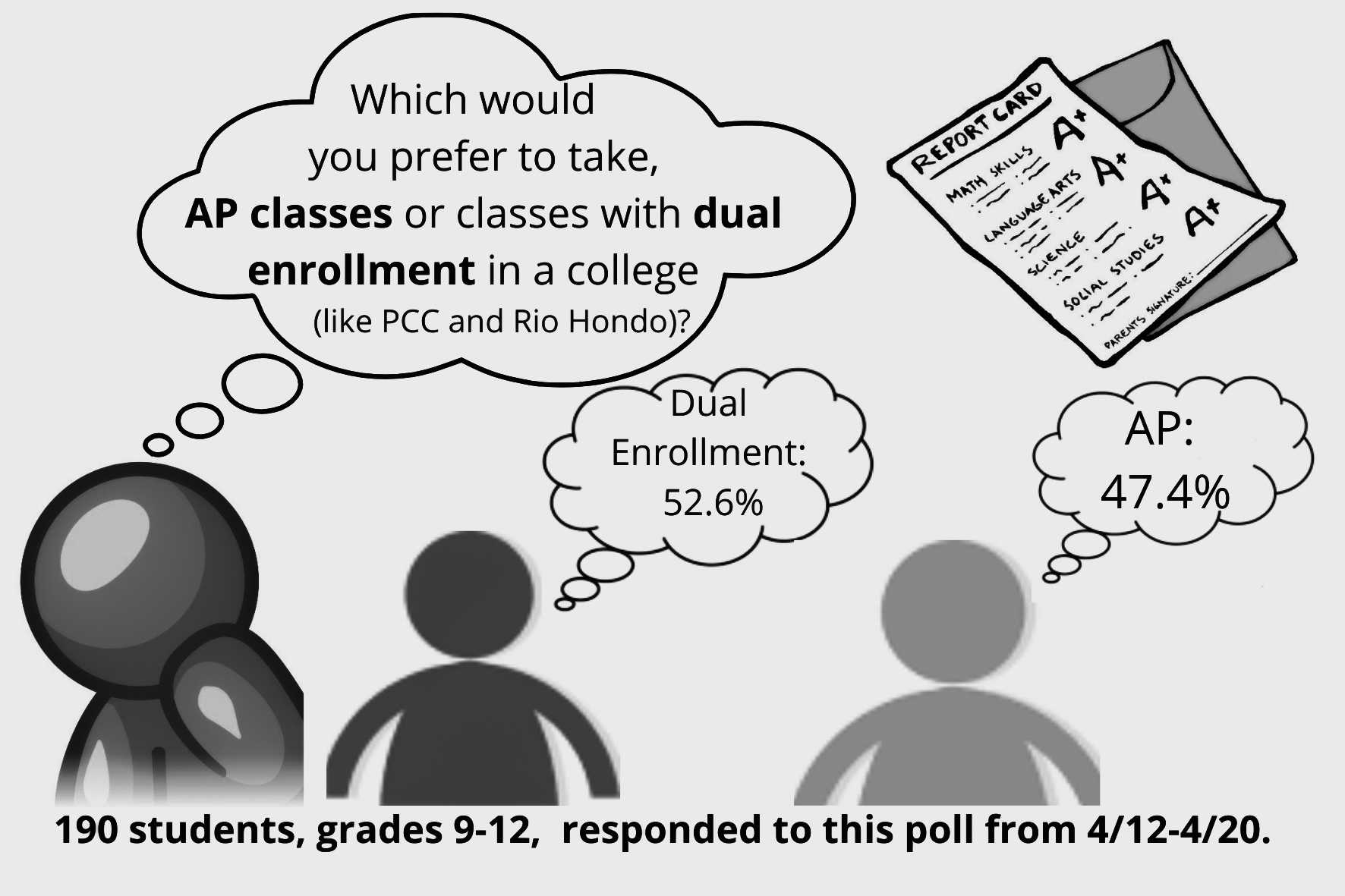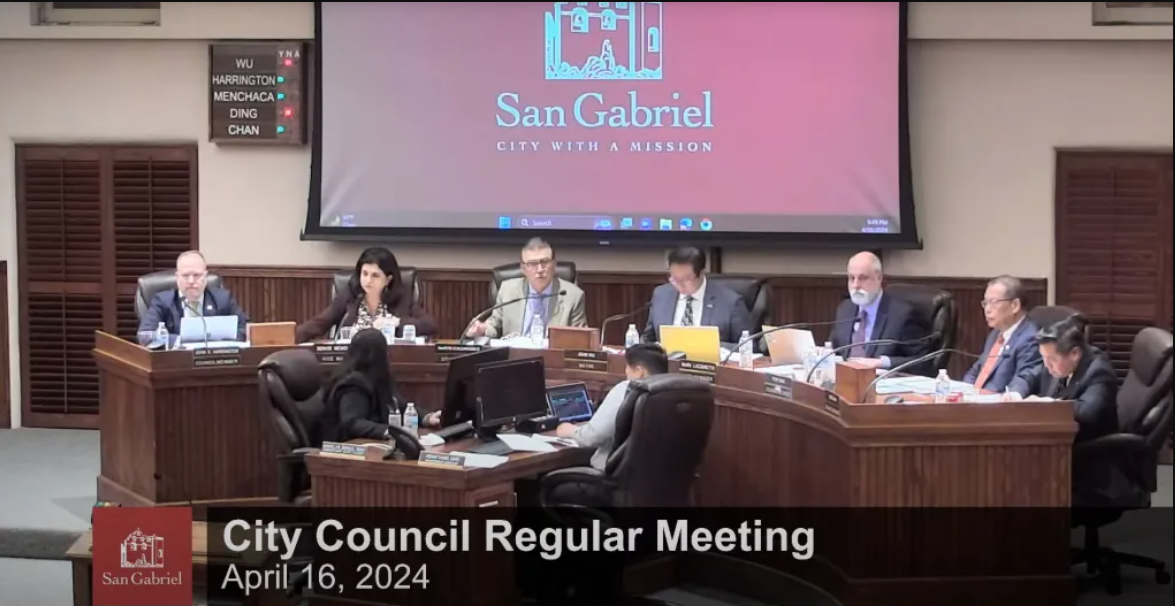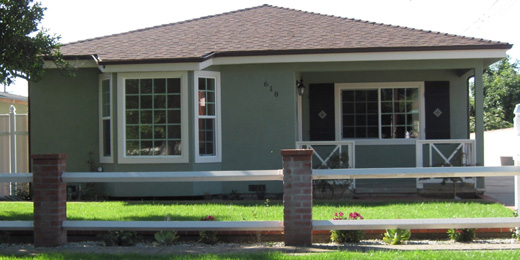Dual college enrollment benefits high school students
By Paige Dance | Copy Editor
In the competitive high school environment, students take any chance to get ahead of their peers, including taking Advanced Placement (AP) classes or dual enrollment courses. However, dual enrollment is much more beneficial to high school students planning on furthering their education.
By taking a dual enrollment course, students are able to attend classes at a local college, counting towards credits for their future college career.
When taking a dual enrollment class, as long as the student receives a C or higher in the class, the individual will receive credit. With the AP system, even if the student receives 100 percent in the class, if they fail the AP test at the end of the year, receiving a two or lower, they will not receive credit for the class.
According to the Public Policy Institute of California, “an applicant to UC Berkeley who completed an AP statistics course with a score of 3 or better would be awarded 2.7 college units. If the same applicant had completed a comparable dual enrollment course through Fresno City College with a C or better, that student would earn 4 units.”
These units can transfer when going into college, benefiting students by gathering enough units to knock out their general education requirements and allowing the student to move directly into their major classes. This also helps reduce tuition costs in the long run as it gives students a chance to graduate earlier by completing their class requirements faster.
With students receiving more credits when transferring them to college, it is clear that students are gaining more from these courses compared to AP’s.
Although students are given all year to prepare for the exam, the AP tests prove to be a challenge for even the most prepared students. According to Stradaeducation.org, only 31.3 percent of high school students who took their AP tests passed with a score of three or higher in 2019.
Even if the student passes their AP test with a three or higher, the college that the student is hoping to attend may not even accept this credit. Some schools will only give credit if the student receives a four or a five, and some schools will not give credit to any scores, such as Brown University.
This means that over half of the students taking AP classes are potentially paying $95 for a class with no benefits moving forward. This is in comparison to students who possibly have to pay for the college class with dual enrollment, but as long as the student receives a C or better, will receive credit through the college.
Dual enrollment classes also have less restrictions when compared to AP classes, where students are restricted to the classes that their high school has to offer, such as Gabrielino only offering AP Spanish and Mandarin.
Not only this, students are given a proper college experience when attending dual enrollment courses, allowing them to better prepare for their two or four years on campus in the future. These classes are at a higher level as they are college courses, versus AP classes which are college level classes adapted specifically for high schoolers.
For students interesting in furthering their education, it is clear that dual enrollment classes provide a challenging yet benefitting experience AP courses cannot provide.

Advanced placement courses are highly recommended
By Oralis Ward | Staff Writer
Throughout a student’s time in high school, we have the opportunity to access college-level curriculums. These Advanced Placement (AP) classes are usually opted to get ahead from the standard high school education and experience a steady college-level pace. While dual enrollment courses are an option for students, enrolling in an AP class is substantially better for the average student who aims to have a practical alternative to learn at a higher level.
In general, there are over 35 different kinds of AP courses, some include classes ranging from AP Calculus BC to AP 3D art. Among these courses, students typically follow a rigorous curriculum and proceed to take an AP exam that determines whether students get credit for their college career or receive an accelerated placement in subjects such as math and English.
Enrolling in an AP class is increasingly popular, seeing the large student participation rates. Studies from College Board show that over 1.24 million students in the United States purchased an AP exam in 2018, a 25.1 percent increase from reports shown in 2008.
As many students continue to enroll themselves in an AP environment, individuals often wonder why AP courses are recommended. By including AP courses into the regular high school curriculum, students take advantage of the possibility to earn college credit while in high school.
According to a Cappex article, “Instead of [a student] having to go to a college or block-out time to take an online class, most AP classes are offered at highschool, sometimes by a teacher with whom students are familiar with.”
In regards to college credit, partaking in an AP course happens to be more accepted by the eyes of college admissions.
According to an article from Research.com, since AP courses came from the “makers of the SATs, [it’s] much more standardized, structured, and more widely accepted. Having been around for 70 years, it has been a yardstick for college qualification.”
With classes being easily accessible, students are able to distinguish their college resumes while also knocking out general education requirements once enrolled.
Besides the extra credit and challenge AP offers, according to an article on Studypoint, “31 percent of colleges and universities look at AP experience when making scholarship decisions.”
This means that if a student decides to join an AP class, it would greatly benefit them when enrolling and waiting to be accepted. However, even before college, AP courses can still help students with their highschool transcripts.
According to the website Collegevine, regardless if students pass the AP exam, individuals with an “unweighted GPA […] have extra value to AP or IB courses.”
Based on this, it is easy to incorporate an AP lifestyle into your highschool transcripts, as the number of how many one could take is unlimited. Keeping in mind that only one AP class can have an already stressful syllabus, it’s vital to be precautious of the number of AP classes taken on.
All in all, AP classes offer students a means of convenient education. Having the opportunity to access this convenient education should be pursued when aiming to learn at a higher and rigorous level.






